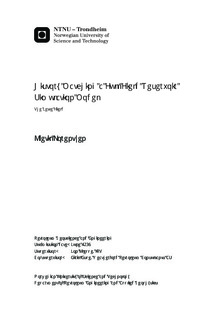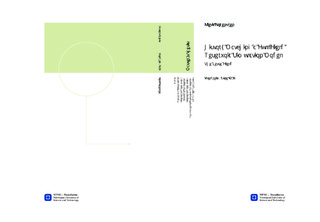| dc.description.abstract | Reservoir models are used for understanding and prediction of reservoir performance. The Jette dynamic reservoir model were not capable of representing reservoir performance at Jette and experienced problems with prediction of reservoir performance. Oil production at Jette were overestimated and it was of interest to history match the Jette dynamic reservoir model in order to increase understanding and obtain a more realistic representation of the reservoir.
In this thesis, the upscaled Jette dynamic reservoir model from project work by Lorentzen (2013) has been manually history matched. Perturbations to the model have been performed in a trial and error fashion, in accordance with the most recent geologic understanding and knowledge of the Jette reservoir. Attention has been focused on validation of model input as well as only making realistic changes to the model in order to obtain a reasonable representation of the Jette reservoir.
Most perturbations during history matching of the Jette dynamic reservoir model were performed using Petrel, a complementary software to the ECLIPSE 100 reservoir simulator used to run the Jette model. During validation of input, reservoir characterization were improved by replacing the old fluid model with two new fluid models and establishing a compartmentalized reservoir by inclusion of sealing faults. As a result of this, new lift curves were created in order to run the model constrained by tubinghead pressure during prediction of reservoir performance. Updates to well completions were also needed. The main history matching parameters have been permeability, aquifer size and connectivity in addition to vertical flow barriers representing black shales and calcite stringers. Permeability has been perturbed according to interpreted well tests in order to promote linear flow.
The Jette dynamic reservoir model is considered to be successfully history matched. Well D-1H is capable of accurately replicating historical performance data when running constrained from both allocated oil rate and tubinghead pressure. Well E-1H also experience a reasonable match. However, with a slight mismatch in water production and bottomhole pressure from 15th of November 2013, possibly caused by an overestimate of oil in the model.
Prediction of reservoir performance at Jette, using the history matched model, were performed for the period between 1st of March 2014 and 1st of January 2020. Prediction runs were constrained by tubinghead pressure and no seam effect was observed when crossing over from history mode. However, oil production in well E-1H is slightly overestimated. A total of four prediction scenarios were selected to investigate the effect of gas lift rate at Jette, they found oil production to increase with increasing gas lift rate.
History matching of the Jette dynamic reservoir model has established a better understanding of the mechanisms controlling reservoir behavior at Jette. Hence, the process of history matching has clearly added value to the Jette dynamic reservoir model as it can now be used with greater accuracy and less uncertainty when conducting simulation studies in the future. | |

